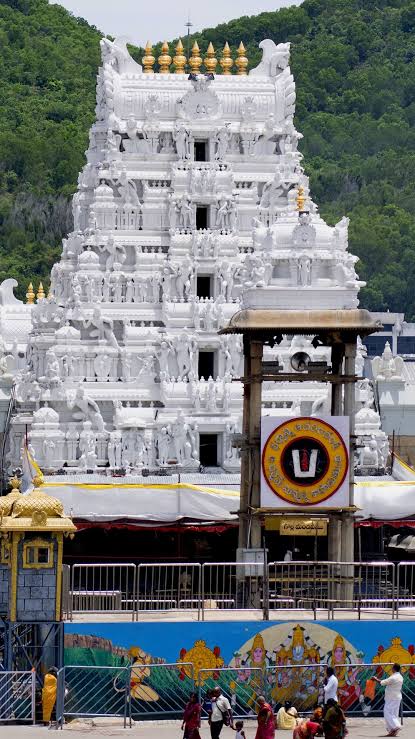In recent news, the famous Tirupati Laddu has been at the center of a controversy that has grabbed national attention. The Supreme Court of India has made a key statement regarding the issue, and it has brought relief to many devotees who had concerns. But why is this issue so important? What is this controversy all about? Let’s break it down in simple words for everyone, including students.
What is Tirupati Laddu?
Before we dive into the controversy, let’s first understand what Tirupati Laddu is. Tirupati Laddu is a famous sweet given to devotees as prasadam (a religious offering) at the Tirumala Venkateswara Temple in Andhra Pradesh. It’s a round-shaped sweet made of ingredients like gram flour, sugar, ghee, and dry fruits. The laddu is highly cherished by devotees, and over 3 lakh laddus are prepared daily to be distributed to visitors. It has also earned a Geographical Indication (GI) tag, making it a protected product that can only be made at the Tirupati Temple.
The Controversy: What Happened?
The controversy started when rumors began spreading that lard (pig fat) was used in making the laddus. These rumors caused a lot of concern and hurt the religious sentiments of many people. Lard is considered impure in many religions, including Hinduism, which is why the claim shocked so many devotees. The rumor was widely circulated on social media, leading to protests and complaints by devotees and religious leaders alike.
Many people who heard about the rumor felt betrayed because the Tirupati Laddu holds a significant place in their spiritual journey. Eating or consuming anything impure in the temple is considered a sin, so the idea that lard could be used in this sacred offering stirred outrage and disbelief.
Supreme Court’s Role in the Controversy
The matter eventually reached the Supreme Court, the highest court in India. People filed petitions asking the court to investigate and stop the usage of lard in the laddus. There were demands for clarity and transparency regarding the ingredients used in the preparation of the laddus.
After considering the concerns raised by devotees, the Supreme Court addressed the matter and stated that there is no evidence to suggest that lard or any non-vegetarian ingredient is used in the laddus. The court assured that the preparation process of the laddus is strictly monitored and follows traditional methods that have been in place for many years.
In fact, the court went a step further to clarify that no such controversy should be entertained unless there is factual proof. As of now, no such proof exists to show that lard was used, and thus, there is no need for devotees to be alarmed.
How Are Tirupati Laddus Made?
Let’s take a look at the actual process of how Tirupati Laddus are made. This might help clear any doubts that anyone may still have.
- Ingredients: The main ingredients used in making laddus are high-quality besan (gram flour), sugar, ghee (clarified butter), and dry fruits such as cashews and raisins. These ingredients are sourced from trusted suppliers to ensure quality.
- Preparation: The laddus are made in a dedicated kitchen called Potu within the Tirumala temple premises. Only trained temple cooks, known as archakas, are allowed to make the laddus. Hygiene is maintained strictly in this kitchen.
- Traditional Methods: The laddus are made using age-old traditional recipes that have been passed down through generations. The recipe is kept a closely guarded secret, but it involves mixing the ingredients, shaping them into laddus, and finally cooking them.
- No Outsourcing: The preparation of laddus is done entirely within the temple, and it’s not outsourced to any other place. This ensures that there is no tampering with the ingredients or the preparation process.
The Importance of Tirupati Laddu
For devotees visiting the Tirumala Temple, receiving a Tirupati Laddu is an essential part of their pilgrimage. It is more than just a sweet—it is a sacred offering from Lord Venkateswara, believed to carry the Lord’s blessings. The laddu symbolizes the end of a devotee’s spiritual journey at the temple, and many people take the laddus back home to share with family and friends as a holy gift.
Because of its importance, any claims regarding impurity in its preparation can deeply affect the religious sentiments of millions of people. This is why the controversy around the use of lard became such a huge issue. However, the Supreme Court’s clarification has helped put an end to these rumors, restoring the faith of devotees in the sacredness of the laddus.
Why Fake News is Harmful
The Tirupati Laddu controversy is a good example of how fake news and rumors can cause unnecessary panic. In this case, a false claim spread like wildfire, hurting the emotions of many devotees. When people believe in false information without checking the facts, it can lead to misunderstandings and even unrest.
It’s important for everyone, especially young students, to be careful about what they believe and share. Always verify information from trusted sources before accepting it as true. In today’s world, with the internet and social media, fake news can spread very quickly. So, critical thinking and fact-checking are skills everyone should learn to avoid falling into such traps.
Conclusion
The Supreme Court has made it clear that there is no evidence to support the claim that lard is used in Tirupati Laddus. The preparation of the laddus follows strict traditional methods, and devotees can rest assured that their sacred prasadam remains pure.
The Tirupati Laddu will continue to be a symbol of devotion and blessing for the millions of devotees who visit the Tirumala temple every year. This incident serves as a reminder of the power of rumors and the importance of always seeking the truth.







